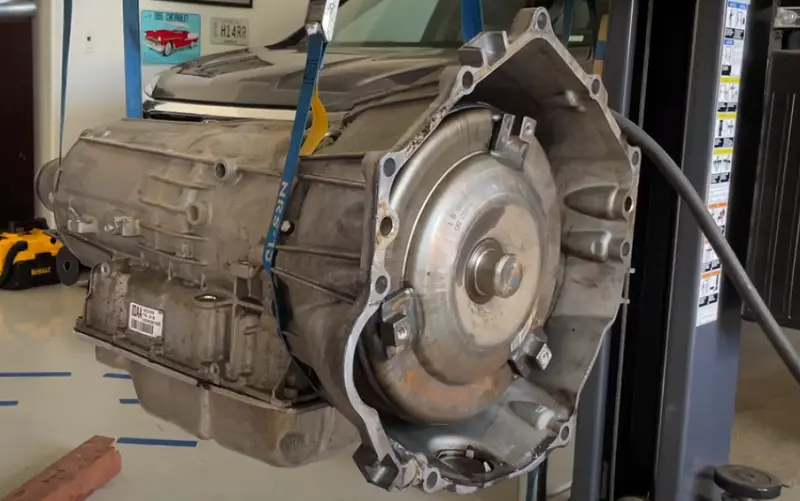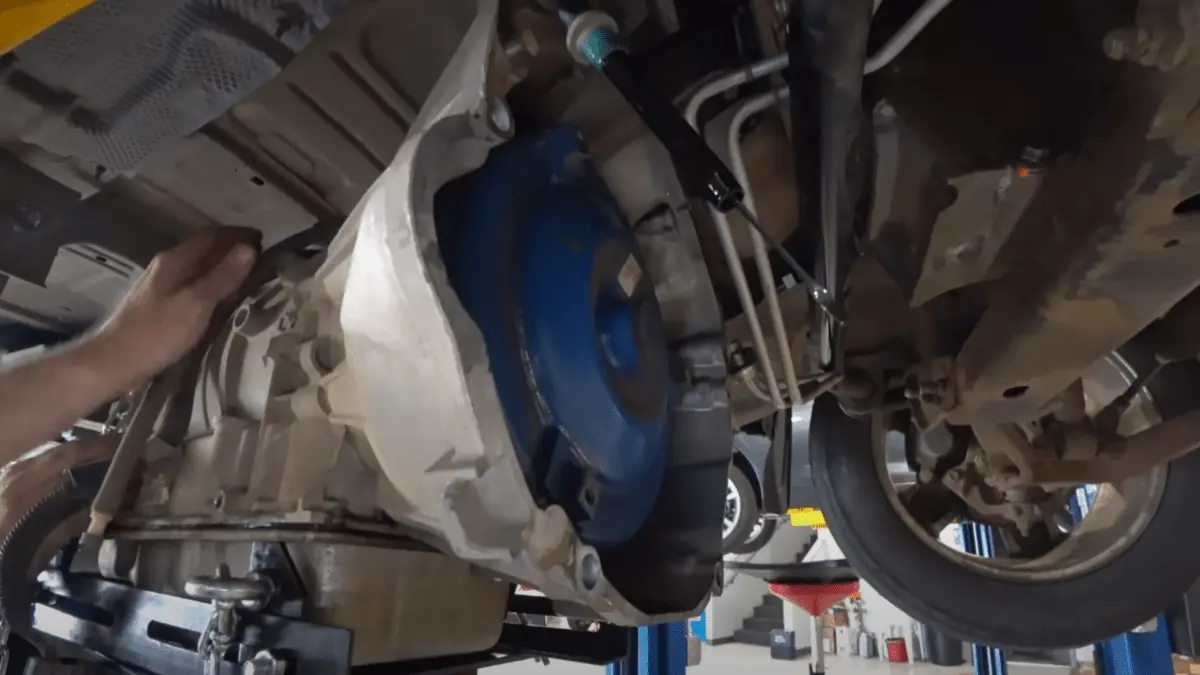The Chevrolet Silverado has long been a reliable and versatile choice for truck enthusiasts. However, if you own a 2011 Silverado with a 6-speed transmission, you may have encountered some common issues that demand attention. In this blog post, we’ll explore the most frequent problems reported by owners of these trucks and provide practical solutions to address them. From slipping gears to unusual noises and fluid leaks, we’ll guide you through how to recognize these problems and, more importantly, how to resolve them. Don’t let transmission issues stall your Silverado’s performance—read on to discover what you can do to keep your beloved truck running smoothly.
2011 Silverado 6 Speed Transmission Problems
The Chevrolet Silverado has long been a popular choice among truck enthusiasts, offering power, durability, and versatility. However, like any vehicle, it’s not immune to issues, and one recurring concern among 2011 Silverado owners relates to the 6-speed transmission. In this article, we’ll delve into the six most common problems faced by these owners and explore potential solutions.
1. Delayed Shifts and Slipping Gears:
One of the most frequently reported problems with the 2011 Silverado 6-speed transmission is delayed shifts and slipping gears. This can manifest as a delay in acceleration, hard shifting, or even jerking while driving. The root causes of these issues can be varied, from worn-out clutches to problems with the shift solenoids. If you encounter these problems, it’s crucial to consult a qualified mechanic who can diagnose the specific issue and recommend a suitable repair.
2. Shaking or Grinding While Driving:
Owners have also reported experiencing shaking or grinding sensations when driving their 2011 Silverados. This can be a symptom of transmission problems, and it’s important not to overlook these warning signs. Grinding noises could indicate worn synchronizers or gears, while shaking may be linked to an imbalanced torque converter or drive shaft. Prompt action is needed to prevent further damage to the transmission.
3. Burning Smell:
Another common concern associated with a malfunctioning 6-speed transmission is a burning smell. This smell may emerge while the vehicle is running and can be a sign of overheating transmission fluid. Overheating can lead to a host of problems, including fluid breakdown and wear on transmission components. Regular maintenance, such as checking and changing transmission fluid, is essential to prevent this issue.
4. Shifter Problems:
If you find that the shifter becomes stuck or non-responsive, it can be frustrating and, more importantly, a safety hazard. This issue could be attributed to a faulty shift cable, worn-out bushings, or problems within the shift lever assembly. Diagnosing and repairing this problem should be done by a professional to ensure the proper functioning of the transmission.
5. Leaking Fluids:
Transmission fluid leaks are another recurring issue among 2011 Silverado owners. Leaks can occur for various reasons, including damaged gaskets, seals, or transmission lines. It’s crucial to address leaks promptly, as low transmission fluid levels can lead to overheating and premature wear of transmission components.
6. Transmission Failure:
Ultimately, if the issues above are addressed or addressed for a short time, they can culminate in transmission failure. A failed transmission can be a costly and time-consuming problem to resolve. To mitigate the risk of transmission failure, it’s essential to stay on top of routine maintenance, including regular transmission fluid changes and thorough inspections.
How To Solve The 2011 Silverado 6 Speed Transmission Problems

1. Delayed Shifts and Slipping Gears:
Solution: Delayed shifts and slipping gears can be a sign of various underlying issues. The first step is to have your truck’s transmission system thoroughly inspected by a qualified mechanic. They will perform a diagnostic test to identify the specific problem. Depending on the diagnosis, possible solutions may include
- repairing or replacing worn-out clutches,
- addressing shift solenoid problems or
- performing a transmission fluid flush and filter change.
2. Shaking or Grinding While Driving:
Solution: Shaking or grinding sensations during driving can be unsettling and may indicate problems within the transmission. To address this issue, consult a professional mechanic for a comprehensive inspection. Potential solutions could involve
- repairing or replacing worn gears or synchronizers,
- addressing imbalances in the torque converter or drive shaft, or
- adjusting the transmission mounts and supports.
3. Burning Smell:
Solution: A burning smell often signifies overheating transmission fluid. Overheating can cause the breakdown of the fluid and lead to a host of problems. To resolve this issue, it’s vital to address the root cause of the overheating. Check the transmission cooler, which could be clogged or malfunctioning. Ensure that the cooling system is functioning correctly. Additionally, consider replacing the transmission fluid and filter to prevent further overheating.
4. Shifter Problems:
Solution: A stuck or non-responsive shifter is not only an inconvenience but also a safety hazard. This issue can result from problems with the shift cable, worn-out bushings, or issues within the shift lever assembly. To resolve shifter problems, consult a professional mechanic to determine the cause. Potential solutions include replacing the shift cable, bushings or shift lever components.
5. Leaking Fluids:
Solution: Transmission fluid leaks can lead to low fluid levels, causing overheating and premature wear of transmission components. To address leaks, first, identify the source of the leak. It could be due to damaged gaskets, seals, or transmission lines. Once the source is identified, have the faulty components replaced or repaired. It’s essential to address leaks promptly to prevent further damage to your transmission.
6. Transmission Failure:
Solution: If the earlier problems are ignored or left unaddressed for an extended period, they can ultimately lead to transmission failure. In the event of transmission failure, the recommended course of action is to consult a professional mechanic who specializes in transmissions. Depending on the extent of the damage, transmission repair or replacement may be necessary.
RELATED: How To Fix 2017 Silverado Transmission Problems
Preventative Maintenance:
To avoid encountering these transmission problems in the first place, follow these preventative maintenance tips:
- Regular Fluid Changes: Ensure that you change the transmission fluid and filter at the intervals specified in your owner’s manual. Fresh transmission fluid helps to maintain proper lubrication and cooling.
- Drive Responsibly: Avoid aggressive driving behaviors such as rapid acceleration and abrupt stops, as they can contribute to premature transmission wear.
- Professional Inspection: Periodically have your transmission system inspected by a qualified mechanic, even if you aren’t experiencing noticeable issues. Catching potential problems early can save you time and money in the long run.
Symptoms Of A Bad Transmission
A malfunctioning or failing transmission can exhibit various symptoms, indicating that it requires attention or repair. Recognizing these signs early can help prevent further damage and costly repairs. Here are common symptoms of a bad transmission:
- Slipping Gears: The transmission may “slip” between gears, causing unexpected shifts or a loss of power while driving. You might notice the engine revving without a corresponding increase in speed.
- Delayed or Rough Shifting: The transmission may exhibit delays or jerky shifts when changing gears. This can result in a harsh, uncomfortable driving experience.
- Unusual Noises: Strange noises, such as grinding, clunking, or whining sounds, when the transmission is engaged, can be indicative of internal issues or worn components.
- Fluid Leaks: Transmission fluid leaks are a common sign of a problem. If you notice red or brownish fluid beneath your vehicle, it’s essential to address the leak and top up the transmission fluid as needed.
- Warning Lights: Modern vehicles are equipped with onboard diagnostics systems that can trigger a “Check Engine” or “Transmission” warning light when issues are detected.
- Burning Odor: A burning smell, often similar to overheated or burnt oil, can indicate that the transmission is running too hot or that the fluid is breaking down.
- Sluggish or Unresponsive Acceleration: A transmission problem can result in sluggish or unresponsive acceleration, making the vehicle feel underpowered or struggling to gain speed.
- Engagement Issues: Problems engaging or disengaging gears, such as difficulties getting the vehicle into “Park” or “Drive,” can signal transmission troubles.
- Overheating: An overheating transmission can lead to performance issues and a burning odor. Low fluid levels, leaks, or excessive strain on the transmission often cause overheating.
- Dashboard Messages: Some vehicles may display specific transmission-related error messages on the dashboard, indicating the nature of the problem.
- Changes in Transmission Fluid: Inspect the color and condition of the transmission fluid. Dark, burnt, or discolored fluid can suggest problems within the transmission.
- Stalling: A failing transmission can cause stalling or hesitation when the vehicle is moving, especially when shifting between gears.
RELATED: 2014 Silverado Transmission Problems & Potential Solutions
Frequently Asked Questions
1. What Should I Do If I Notice My Transmission Slipping Gears While Driving?
Transmission slipping is a common issue that can indicate various problems. If you notice this symptom, it’s crucial to have your vehicle inspected by a professional mechanic. Ignoring it can lead to more severe transmission damage.
2. Is It Safe To Continue Driving My Vehicle If The Transmission Is Making Unusual Noises?
Unusual transmission noises, like grinding or whining sounds, should not be ignored. While it might be safe to drive to a repair shop, it’s essential to have the problem diagnosed and repaired promptly. Driving with these noises can worsen the issue and lead to a costly breakdown.
3. What Is The Significance Of Transmission Fluid Color And Condition?
Transmission fluid should be clean and typically has a reddish color. Dark, burnt, or discolored fluid can indicate transmission problems. Regularly check the fluid level and condition and follow the manufacturer’s recommendations for fluid changes to maintain transmission health.
4. How Often Should I Have My Transmission Serviced, Even If I’m Not Experiencing Any Issues?
Regular transmission maintenance is crucial to prevent problems. Consult your vehicle’s owner’s manual for recommended service intervals. Generally, a transmission fluid and filter change is recommended every 30,000 to 60,000 miles, even if no symptoms are present.
5. What Should I Do If My Vehicle’s “Check Engine” Or “Transmission” Warning Light Illuminates?
When warning lights such as “Check Engine” or “Transmission” appear on the dashboard, it’s an indication that the vehicle’s onboard diagnostics system has detected a problem. Have your vehicle scanned by a mechanic or at an auto repair shop to identify the specific issue and proceed with necessary repairs. Ignoring these warnings can lead to more severe and costly transmission problems.
Final Discussion
In the world of automobiles, the health and performance of your transmission are paramount. Recognising the symptoms of a failing transmission, such as slipping gears, odd noises, or fluid leaks, is the first step in addressing potential issues. Regular maintenance and timely intervention are key to preserving your vehicle’s transmission and preventing costly breakdowns. Whether it’s a manual or automatic transmission, ignoring these signs can lead to more extensive and expensive repairs. When in doubt, consult a qualified mechanic who can diagnose the problem and recommend the best course of action. Your vehicle’s transmission plays a critical role in your driving experience, and taking care of it ensures a smoother and safer journey on the road.

Eric L. Friedman is a car expert who has worked on Chevy and GMC trucks for over 10 years. He started AutoYolo to help people fix their own cars. On the blog, he shares easy tips, step-by-step guides, and repair advice to make car problems less stressful and more affordable.

